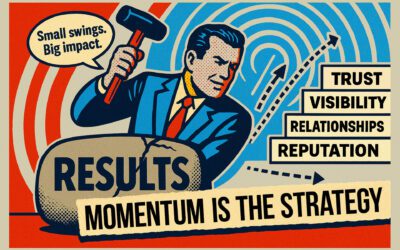Setting the Stage: Why Pricing Matters in Branding
Pricing isn’t just a business decision—it’s a branding decision. As one of the most influential elements in the marketing mix, your pricing strategy does more than affect your bottom line. It communicates value, signals positioning, and shapes customer expectations long before they engage with your product or service.
The right pricing strategy can help you attract your ideal clients, build loyalty, and boost revenue. The wrong one? It can send mixed signals, erode trust, and leave money on the table.
Pricing and Perception: What Price Says About Your Brand
Your price tag is more than a number—it’s part of your brand story. It tells customers what to expect, how to feel, and what kind of experience they’re buying into.
If your brand stands for quality, expertise, or exclusivity, a discount pricing model can send the wrong message. On the other hand, if your brand promises accessibility or affordability, a premium price point might turn away the very audience you want to attract.
Strategic pricing aligned with your brand values isn’t just good practice—it’s good branding.
Loyalty, Reputation, and the Long-Term View
Your pricing strategy also impacts customer loyalty and long-term brand perception.
Premium pricing often attracts clients who value quality and are willing to invest in results. These clients tend to be more committed, less price-sensitive, and more likely to refer others who align with your brand.
Discount pricing may drive short-term volume—but it often invites transactional relationships. Customers driven solely by price are more likely to switch the moment a cheaper option appears.
The takeaway? Set your prices with long-term brand equity in mind.
Price It Right: Dos and Don’ts of a Brand-Aligned Pricing Strategy
✅ Dos:
-
Understand your ideal customer and what they value most.
-
Set prices that reflect your value—not just your cost.
-
Be intentional about your market positioning.
-
Experiment and adapt as your brand grows.
❌ Don’ts:
-
Don’t base pricing solely on hours or expenses.
-
Don’t assume lower prices will automatically attract more clients.
-
Don’t forget to communicate the why behind your pricing.
-
Don’t be afraid to evolve your pricing strategy as your business evolves.
Adjusting Your Price: Strategic Risks and Rewards
Raising or lowering your prices can have a ripple effect on your brand.
Raising prices can increase profit margins, attract higher-quality clients, and strengthen your perceived value—if it’s backed by a strong brand promise. But raise too fast without context, and you risk losing trust.
Lowering prices might attract new business or help you compete in a saturated market. But it can also shrink your margins, damage your positioning, and lead customers to expect ongoing discounts.
Either way, change your prices intentionally—and always tie those changes back to your brand’s promise and positioning.
Final Thought: Make Pricing Part of Your Brand Strategy
Pricing isn’t just a math problem. It’s a marketing signal and a strategic tool that directly influences how people see your brand.
When aligned with your values and positioning, a well-thought-out pricing strategy can help you attract the right clients, increase profitability, and strengthen your reputation.
Don’t treat pricing as an afterthought. Make it part of your brand’s foundation—and use it to stand out for all the right reasons.
Curious how your pricing choices shape perception and word-of-mouth? Read What Your Price Says About You for a deeper dive into pricing as a brand signal.




